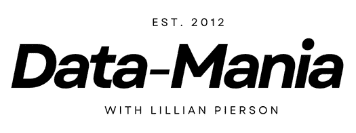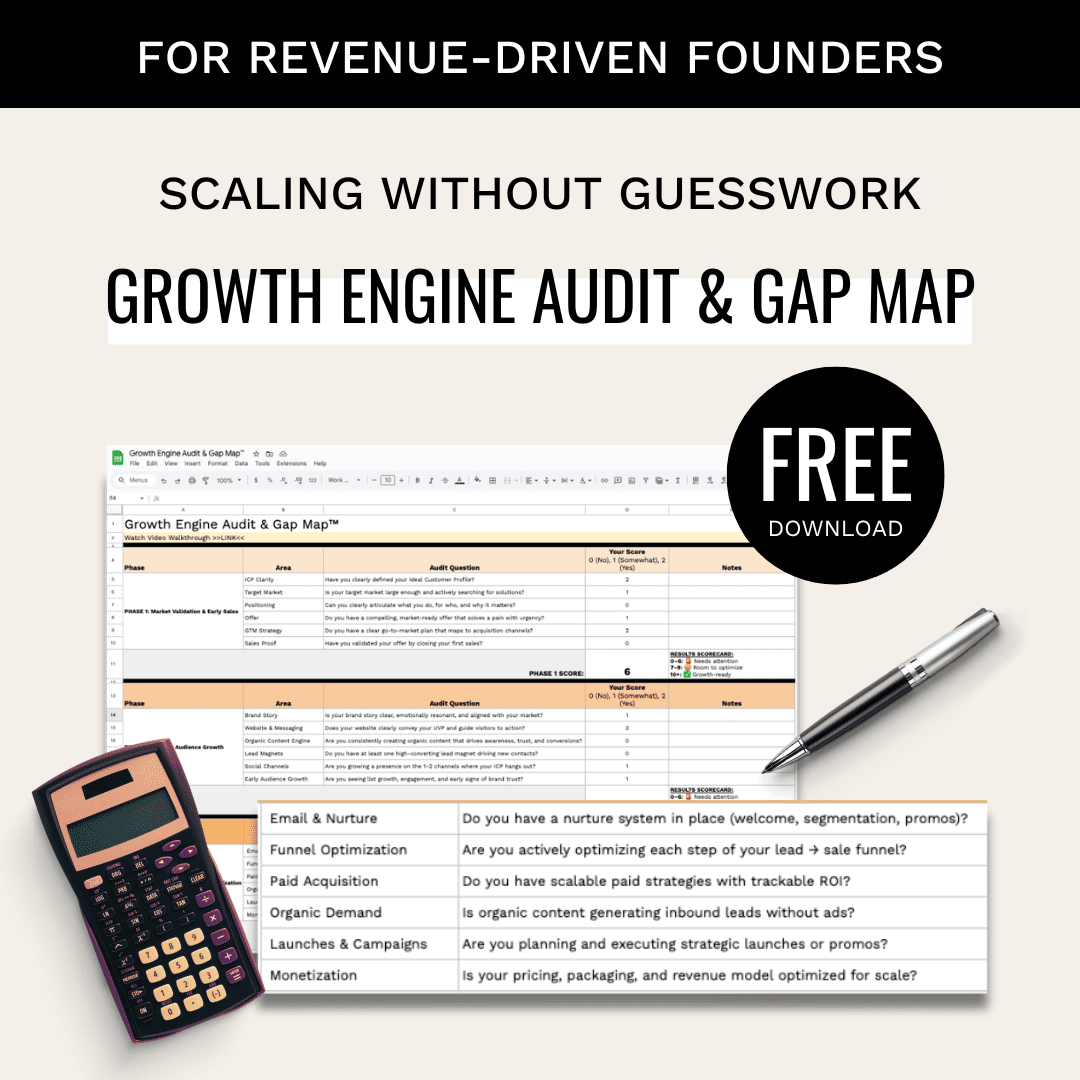Here’s what you need to know: AI-powered search engines are changing the game for how B2B tech companies get discovered online. To stay visible, you need to know how to rank in AI search results, so in this blog we’re going to should you how to do that, with a serious focus on Geographic Optimization (GEO) and Answer Engine Optimization (AEO).
- GEO ensures your content shows up in location-based searches like "cloud security in Austin." It’s about tailoring your presence to specific regions using local keywords, schema markup, and consistent business info.
- AEO helps your content get featured as direct answers in AI-driven results. Think of it as structuring your content to answer specific questions like "What’s the cost of enterprise data migration?"
Why this matters: AI search engines prioritize user intent, accuracy, and direct answers. If your content doesn’t align with these priorities, you risk being invisible to potential customers.
Quick steps to get started:
- Technical Setup: Use schema markup (like FAQ and LocalBusiness), ensure fast site speeds, and optimize for mobile.
- GEO Strategy: Research local keywords, create region-specific pages, and maintain consistent business details across platforms.
- AEO Strategy: Structure content around specific questions, use conversational language, and format for direct answers (bullet points, short paragraphs).
- Track Performance: Monitor featured snippet rates, local search rankings, and zero-click impressions.
The takeaway: When it comes to how to rank in AI search results, you need to stand out, you need to focus on being relevant locally and providing clear, direct answers. GEO and AEO aren’t just buzzwords – they’re how you stay competitive in the AI-driven world of search.
How I Ranked #1 on AI Search Engines (With Actual Proof)
Step-by-Step Guide to On How to Rank in AI Search Results – GEO and AEO Optimization
Creating a strong GEO (Geographic Engine Optimization) and AEO (Answer Engine Optimization) strategy involves a methodical approach across three main areas. Each part plays a critical role in ensuring AI search engines can easily interpret and rank your content.
Technical SEO Foundations
The first thing you need to know regarding how to rank in AI search results: A solid technical SEO setup is the backbone of your GEO and AEO efforts. Without it, even the most carefully crafted content may fall short.
Schema markup is essential for AI search optimization. For B2B tech companies, using LocalBusiness schema helps AI systems understand your physical presence, while FAQ schema organizes your content for quick answer retrieval. The Organization schema ties together company information across your site, building a recognizable entity profile for AI systems.
Consistency is key – your company name, address, and phone number (NAP) should match across all pages and structured data. Discrepancies can signal a lack of trustworthiness, potentially affecting your rankings.
Site speed is another critical factor, as AI search engines prioritize fast-loading pages to enhance user experience. Aim for load times under two seconds. Use tools like Google PageSpeed Insights to pinpoint and fix slowdowns, especially on mobile.
Mobile optimization is vital since most location-based searches happen on smartphones. Ensure your site is mobile-friendly with clear headings, easy-to-read fonts, and clickable contact details. AI systems heavily weigh mobile usability, particularly for local queries.
SSL certificates and HTTPS implementation are non-negotiable for building trust and security. Beyond securing your site, make sure it adheres to modern web standards like HTTP/2 and uses proper redirects to avoid confusing AI crawlers with broken links.
These technical elements lay the groundwork for your GEO and AEO strategies. Once they’re in place, you can focus on how to rank in AI search results by tailoring your approach to local keywords and regional data.
Optimizing for GEO: Local Keywords and Data
GEO optimization revolves around understanding how AI interprets location-based searches and regional business contexts. It’s more than just adding city names – it’s about connecting with local industries and ecosystems.
Start with local keyword research to uncover how your audience searches for services in specific areas. For instance, phrases like "enterprise software developers in Chicago" or "tech consulting near the Loop" reflect regional nuances that AI systems recognize.
Develop location-specific landing pages that address the unique needs of each area. For example, a cybersecurity firm targeting Austin might focus on the city’s fintech growth and compliance standards, while a San Francisco page could highlight startup security challenges and venture capital considerations. This signals to AI systems that your expertise is tailored to specific regions.
NAP consistency is still a cornerstone of local SEO, but AI systems now check a wider range of sources. Ensure your business details match exactly across your website, Google Business Profile, directories, and social media. Even minor inconsistencies like "St." versus "Street" can create confusion.
Use geographic schema markup to include precise location data such as coordinates and service areas. Implement GeoCoordinates schema to specify exact locations and areaServed schema to outline your service territories. This helps AI systems understand not just where you’re based but also where you operate.
Finally, when it comes to how to rank in AI search results, be sure to focus on local content creation that demonstrates your understanding of the regional business landscape. Write about local events, trends, and challenges specific to your industry. This type of content shows AI systems – and your audience – that you’re genuinely engaged with the local community.
While GEO focuses on establishing a local presence, AEO hones in on answering user questions directly.
Optimizing for AEO: Content Structure for Direct Answers
AEO requires structuring your content to align with how people ask questions and how AI systems extract information. The goal is to provide clear, concise answers while maintaining depth and authority.
When you’re looking into how to rank in AI search results, you always want to start with a question-based content structure by identifying the exact questions your audience is asking. Replace broad topics with specific queries like "How long does enterprise cloud migration take?" or "What’s the cost of migrating 500GB of data to AWS?" This precision improves your chances of matching user queries.
Use direct answer formatting at the beginning of each section. AI systems often extract the first 50-75 words for direct answers, so lead with the key information.
Incorporate conversational language patterns to match how users phrase questions in voice searches and AI chat interactions. Write as if you’re explaining something to a colleague, using phrases like "The main difference between…" to keep it natural and relatable.
A structured content hierarchy is crucial for organizing your information. Use question-based headings like "Why do enterprise companies choose hybrid cloud solutions?" instead of generic ones like "Benefits." This helps AI systems understand the relationship between questions and answers.
Consistency in using industry terms and related concepts strengthens your content’s authority. For example, when discussing API security, mention terms like authentication, rate limiting, and OAuth to reinforce your expertise.
Make sure your answers are complete, addressing any follow-up questions users might have. For instance, if you explain cloud migration, also cover related topics like timelines, costs, and potential challenges. This comprehensive approach increases the likelihood of your content being selected as the authoritative source.
Finally, when it comes to how to rank in AI search results, format for extraction by using bullet points, numbered lists, and clear paragraph breaks where appropriate. While most of your content should flow naturally, structured formats work well for step-by-step guides or feature comparisons, making it easier for AI systems to parse and display your content.
Tools for GEO and AEO Success
Using the right tools can turn guesswork into precise, data-backed strategies. Here’s a breakdown of essential tools to elevate your GEO and AEO efforts.
Keyword and Intent Analysis Tools
Modern keyword research goes beyond identifying search terms – it uncovers user intent and regional differences, forming the backbone of effective GEO and AEO strategies.
Google Keyword Planner is a go-to tool for pinpointing location-specific search terms. For instance, it can highlight how "cloud security consulting" performs in different regions, helping you tailor content to meet local demand and spot untapped opportunities.
SEMrush takes it a step further with features like the Keyword Magic Tool, which generates hundreds of question-based keywords tied to your topics. Its Position Tracking feature lets you monitor rankings in specific locations, while the Topic Research tool maps out semantic connections, aligning your content with how AI-driven search engines evaluate relevance.
Ahrefs excels in keyword difficulty scoring and SERP analysis, showing exactly what ranks for your target terms. Its "Questions" filter identifies specific queries users have about your topics, helping you craft content designed for direct answers. The Content Gap analysis is particularly useful – it reveals keywords competitors rank for in specific regions that you may be overlooking.
Regarding how to rank in AI search results for B2B tech companies, focusing on commercial intent keywords with local modifiers can yield better results. Phrases like "enterprise software implementation services in Austin" or "cybersecurity consulting near Silicon Valley" often face less competition but attract higher-quality leads.
Entity and Semantic Optimization Tools
Optimizing for AI-driven search engines means focusing on semantics – how entities and their relationships are interpreted. These tools help fine-tune your content for modern algorithms.
Google’s Natural Language API provides insights into how Google’s AI reads your content, identifying recognized entities and concepts. This can guide you in strengthening your authority and clarifying expertise.
MarketMuse uses AI to highlight content gaps and suggest related entities. For example, if you’re writing about API security, it might recommend including topics like OAuth, rate limiting, or webhook validation to enhance your content’s depth.
Clearscope analyzes top-ranking pages to suggest terms and concepts that align with user intent, offering real-time optimization tips as you write. Meanwhile, InLinks specializes in entity optimization by linking related topics within your content, helping search engines better understand the relationships between them.
Instead of isolating keywords, focus on interconnected themes. For example, "cloud migration" naturally ties into terms like "data transfer", "downtime", and "compliance." Incorporating these connections can make your content more relevant to AI systems.
Local Search and Citation Management Tools
Managing local business listings manually can be a hassle, especially when accuracy is critical. Citation management tools simplify this process, ensuring consistency across directories.
BrightLocal offers an affordable option, ranging from $8 to $16 per month. It submits to all five major data aggregators, builds over 1,000 citations, and removes duplicates that could confuse search engines – all while giving you control over your credentials.
SEMrush Citation Management integrates seamlessly with SEMrush’s broader SEO tools. At $240 per year per location, it provides submissions in 60 countries and works well with reporting platforms like Looker Studio. However, it submits to only one of the five major aggregators, and listings expire if you cancel your subscription.
WhiteSpark stands out for its flexibility, allowing you to target niche directories relevant to your industry or region. This is especially useful for B2B tech companies needing visibility in specialized directories like Clutch or G2 alongside general business listings.
Yext offers the broadest reach, covering 75 countries and supporting 150 languages. At $499 annually per location, it’s a premium option, but it ensures fast population of listings. However, businesses don’t retain direct control over listings, which expire if the subscription ends.
| Tool | Monthly Cost | Key Strengths | Best For |
|---|---|---|---|
| BrightLocal | $8–$16 | Submits to all five aggregators, removes duplicates, login control | Budget-conscious, multi-location companies |
| SEMrush Citations | ~$20 ($240/year) | Integration with SEMrush, 60-country coverage, Looker Studio compatibility | Existing SEMrush users |
| WhiteSpark | $20+ | Customizable for niche directories | Companies needing industry-specific presence |
| Yext | ~$42 ($499/year) | Extensive reach, fast listing updates | Enterprises with global operations |
When considering how to rank in AI search results, selecting the right tool depends on your geographic reach, budget, and how well it integrates with your current marketing systems. For the best results, ensure your keyword research informs your semantic optimization, which then guides your local citation strategy. By connecting these steps, you’ll create a cohesive, data-driven approach to GEO and AEO.
sbb-itb-e8c8399
Measuring and Improving Your AI Search Performance
Building on the GEO and AEO optimization strategies mentioned earlier, these performance metrics offer insights into how well your efforts drive user engagement. Tracking GEO and AEO performance requires looking beyond traditional SEO metrics. AI-driven search engines evaluate multiple signals, so it’s essential to monitor indicators that show how effectively your content addresses both answer-based and location-focused queries.
Key Metrics for GEO and AEO
- Featured Snippet Capture Rate:
Keep track of how often your content appears as a featured snippet, providing direct answers to target keywords. - Local Pack Visibility:
Monitor your rankings in local search results to evaluate the success of citation and content optimizations. - Zero-Click Search Impressions:
Measure the frequency with which users find answers directly from your content. A higher rate can enhance brand visibility. - Voice Search Query Rankings:
Keep an eye on rankings for naturally phrased voice search queries to attract high-intent traffic. - Entity Recognition Strength:
Ensure search engines correctly associate your business with relevant topics to establish authority. Tools like Google’s Natural Language API can help assess this. - Geographic Performance Variations:
Analyze rankings across different regions to identify areas needing additional GEO optimization.
With respect to how to rank in AI search results, these metrics provide a foundation for regular content updates, ensuring your strategies remain aligned with evolving AI search trends.
Content Updates for AI Search
As AI algorithms and user behavior shift, keeping your content current is crucial. Here are some best practices for maintaining relevance:
- Conduct Regular Content Audits:
Adjust your content based on changing user intent and search trends. - Optimize for Direct Answers:
Structure your content to provide clear, direct responses that match current query formats. - Adapt to Seasonal Trends:
Refine your content strategy to align with seasonal or fiscal cycles. - Keep Local Information Updated:
Ensure local details, such as team profiles, recent projects, and region-specific case studies, stay current. - Verify Technical Accuracy:
Periodically review technical details to ensure your content remains reliable and precise.
Turning these insights into actionable improvements requires the right tools.
Tools for Performance Tracking
- Google Search Console:
Offers valuable insights into query performance and search appearance, helping you measure key metrics. - Data-Mania‘s KPI Reporting Framework:
Tailored for B2B tech companies, this framework links search performance to lead generation metrics. It highlights how improvements in GEO and AEO can drive meaningful business outcomes, helping you prioritize efforts with a focus on revenue impact. - Local Search Performance Monitoring:
Leverage data from your Google Business Profile to understand how customers discover and interact with your listing. Integrating this information into an automated dashboard that combines traditional SEO metrics with AI-specific indicators provides a comprehensive view of your performance.
The ultimate goal is to connect performance metrics to business results. By tracking how improvements in areas like featured snippet capture and local pack visibility influence lead quality and conversions, you can focus on strategies that yield measurable success.
US-Specific Considerations for B2B Tech Marketers
The United States offers distinct opportunities and challenges for B2B tech companies aiming to succeed with AI-driven search strategies. Regarding how to rank in AI search results, tailoring your approach to local preferences and technical standards can significantly influence your GEO and AEO outcomes across various regions and buyer segments. Let’s dive into the key localization details and buyer behavior trends that shape effective strategies in the US market.
US Localization Requirements
Precision in formatting and presentation is crucial for building trust with US audiences. Adhering to these standards not only meets user expectations but also supports AI search optimization.
- Currency and financial formatting: Always use the dollar sign ($) before numbers, and include commas as thousand separators. For instance, write "$1,500,000" instead of "1.5 million USD" or European-style formats. This clarity is especially important when discussing pricing, ROI, or financial benefits.
- Date formatting: Follow the MM/DD/YYYY format consistently. Whether it’s for blog posts, case studies, or product release schedules, this standard aligns with US norms. Keep in mind that most US companies follow a January–December fiscal year, which may differ from international practices.
- Measurement units: Use feet and inches for dimensions, pounds for weight, Fahrenheit for temperature, and miles for distance. However, when dealing with technical specs like server storage (e.g., gigabytes, terabytes) or network speeds (e.g., Mbps, Gbps), stick to metric units, as these are industry standards.
- Spelling conventions: Opt for American spellings to ensure relevance in US-based searches. For example, use "optimize" instead of "optimise" and "color" instead of "colour."
US B2B Search Behavior Patterns
US buyers exhibit distinctive search habits that directly influence GEO and AEO performance. Understanding these behaviors is key to crafting content that aligns with their expectations.
- Authority and credibility: American buyers often prioritize vendor credentials, compliance certifications, and third-party validations before engaging with sales teams. Highlight these elements prominently in your content to build trust.
- Professional tone: Confidence and results-driven language resonate well in the US market. For example, stating that a solution "reduces processing time by 50%" is more compelling than using vague or tentative phrasing.
- Terminology differences: Regional variations in language can impact search optimization. For instance:
- West Coast tech buyers often use terms like "solutions" and "platforms."
- East Coast financial professionals may prefer "systems" and "applications."
- Midwest manufacturing audiences might lean toward "tools" and "equipment", even for software.
- Decision-making timelines: Enterprise software decisions in the US typically take several months to over a year. Early-stage content should address industry challenges and trends, while later-stage materials can focus on implementation details, support options, and ROI projections.
- Compliance and security priorities: Buyers in regulated industries place high importance on compliance. For example:
- Healthcare organizations often seek HIPAA compliance details.
- Financial services firms prioritize SOX and PCI DSS requirements.
- Government contractors look for FedRAMP certifications. Including these keywords in your GEO and AEO strategies can help capture high-intent searches from qualified prospects.
- Regional diversity: Different US regions have distinct search preferences:
- Silicon Valley emphasizes innovation and scalability.
- Manufacturing regions value reliability and proven success.
- Financial hubs like New York focus on risk management and regulatory compliance.
- Emerging tech cities like Austin or Denver often balance innovation with cost-effectiveness.
Conclusion: Growing Through GEO and AEO Optimization
The rise of AI-powered search is reshaping how B2B tech companies approach their online visibility. To stay ahead in this evolving landscape, Geographic Optimization (GEO) and Answer Engine Optimization (AEO) have become critical tools for maintaining a competitive edge. Simply put, you need to know how to rank in AI search results.
Achieving success with GEO and AEO hinges on a few key elements: a solid technical framework, a content strategy that prioritizes clarity, local relevance, and direct answers, and a commitment to ongoing performance tracking. These strategies not only improve visibility but also lead to better-quality leads and stronger conversion rates.
The U.S. market, in particular, offers distinct opportunities for B2B tech companies that focus on localized optimization. For example, searches in Silicon Valley often prioritize innovation and cutting-edge technology, while the Midwest leans more toward reliability and practicality. Recognizing and adapting to these regional search patterns can greatly enhance your GEO and AEO efforts.
To get started, focus on your most valuable markets and the key questions your customers are asking. Develop structured content that directly addresses their challenges, integrates relevant local data, and complies with regional business requirements. Use the tools and metrics highlighted in this guide to monitor your progress and refine your strategy based on real-world results.
When you’re ready to scale your AI search efforts, consider partnering with Data-Mania‘s Fractional CMO services. Their blend of technical expertise and marketing know-how can help you implement GEO and AEO strategies that drive measurable revenue growth.
FAQs
How to rank in AI search results? How can I optimize my content for GEO and AEO to rank higher in AI-driven search results?
To stand out in AI-driven search results using GEO (Geographic Optimization) and AEO (Answer Engine Optimization), focus on crafting well-organized, audience-focused content that meets user needs. Ensure your content provides clear, direct answers to common questions, uses relevant keywords naturally, and is structured for easy interpretation by AI systems.
Incorporate structured data to define your brand, products, and services in a way that AI can easily process and rank. For local search, include location-specific keywords and details to make your content more relevant for geographic searches. By aligning your approach with how AI evaluates and prioritizes content, you can enhance both visibility and user engagement.
What tools and strategies can I use to track and measure the success of my GEO and AEO efforts?
To gauge the success of your Geographic Optimization (GEO) and Answer Engine Optimization (AEO) strategies, it’s essential to use tools specifically designed to analyze AI-driven search performance. These tools not only track your brand’s visibility across platforms like ChatGPT, Google Bard, and Microsoft Copilot but also provide valuable insights into user sentiment and mentions generated by AI.
Here are some key capabilities to prioritize:
- Visibility Tracking: Keep tabs on how frequently and where your brand surfaces in AI-powered search results.
- Sentiment Analysis: Assess the tone and context of AI-generated responses that mention your brand, helping you understand audience perceptions.
- Performance Analytics: Review AI-driven traffic patterns and interactions with your content to identify trends and opportunities.
These tools and insights allow you to fine-tune your optimization strategies, ensuring your brand stands out in both localized and AI-powered search environments.
How do regional differences in the US influence GEO and AEO strategies for B2B tech companies?
Regional differences across the United States significantly influence how B2B tech companies approach GEO (Geographic Optimization) and AEO (Answer Engine Optimization). Local search habits, preferences unique to certain areas, and even differences in terminology can all affect how well your content connects with various audiences.
To navigate these variations, it’s essential to fine-tune your content to reflect local nuances. This might include incorporating region-specific keywords, tweaking your messaging to align with local preferences, and focusing on location-based search terms. Adapting your GEO and AEO strategies to these regional traits can help boost your visibility and drive stronger engagement in localized, AI-powered search results.
Related Blog Posts
- 5 Ways AI Can Optimize Marketing ROI for your Tech Startup
- AI Growth Marketing: Forecasting Use Cases
- AI Visibility: 5 Steps to Optimize for AI Search Ranking in 2026
- AI Brand Visibility: How To Optimize Your Brand’s Visibility in AI Search




